MARIANI’S
Virtual
Gourmet
July
1, 2018
NEWSLETTER
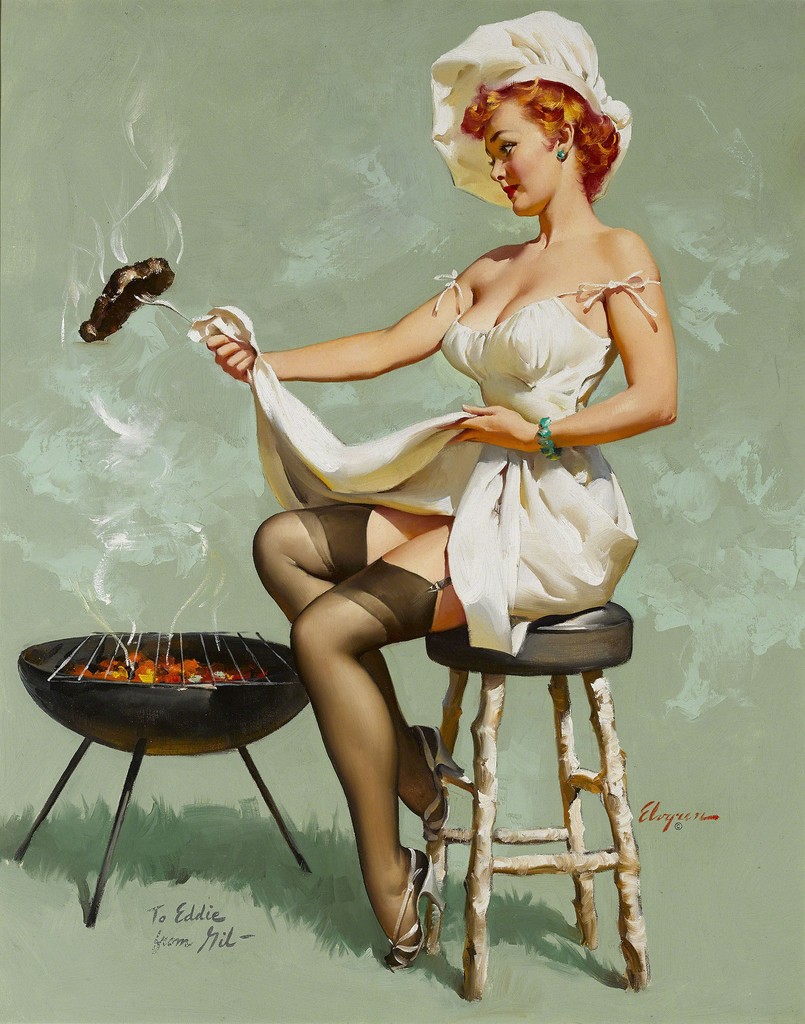
"Barbecue" by Gil Elvgren (1954)
HAPPY FOURTH OF JULY!
❖❖❖
IN THIS ISSUE
DINING OUT IN BORDEAUX
By John Mariani
NEW YORK CORNER
LA PULPERIA
By John Mariani
NOTES FROM THE WINE CELLAR
WHAT I'M DRINKING FOR THE FOURTH
By John Mariani
❖❖❖
DINING OUT
IN BORDEAUX
By John Mariani
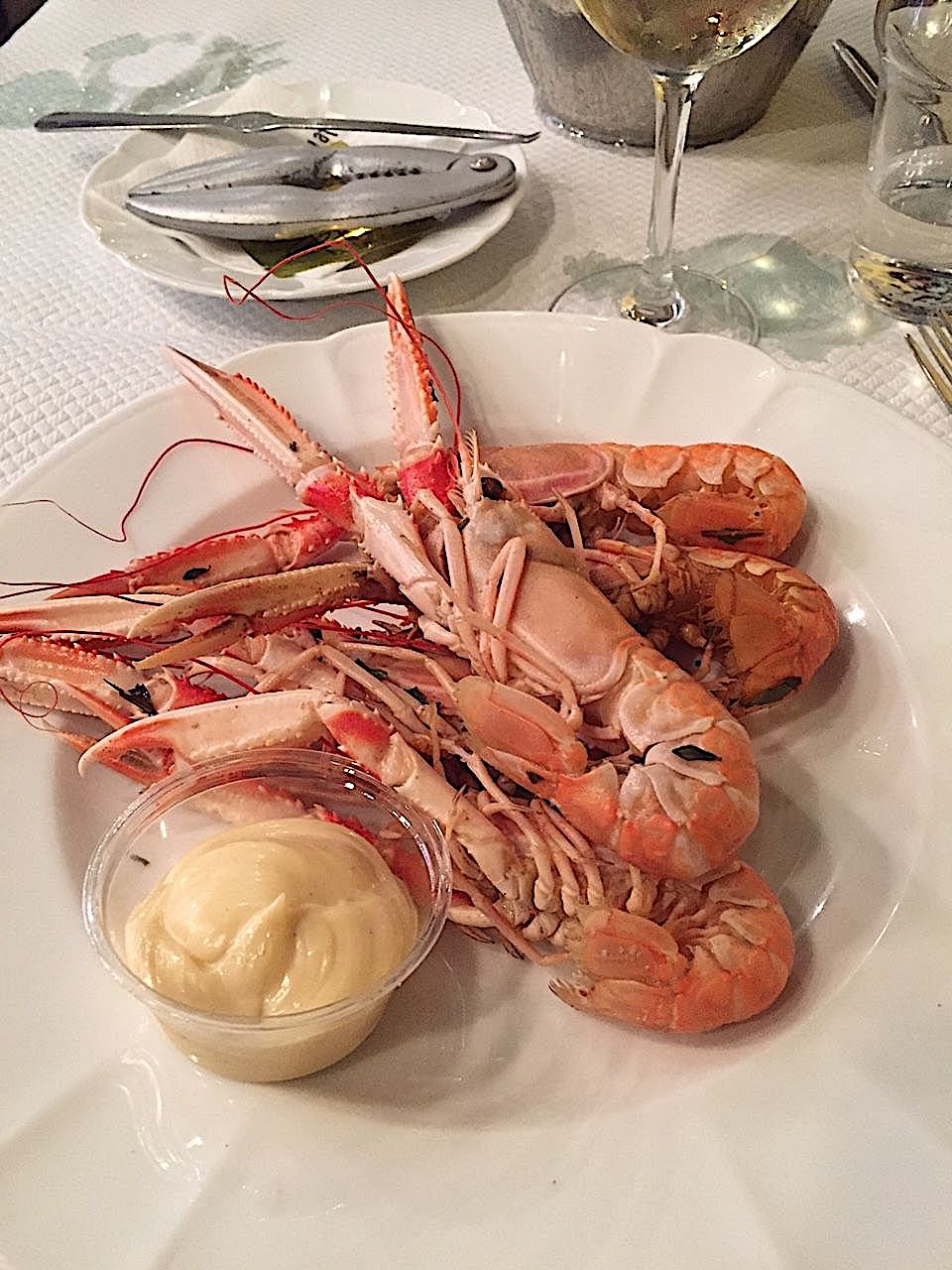
Langoustines mayonnaise at Le Petit Commerce
Here is an array of good ones,
most open Sundays, when others are not.
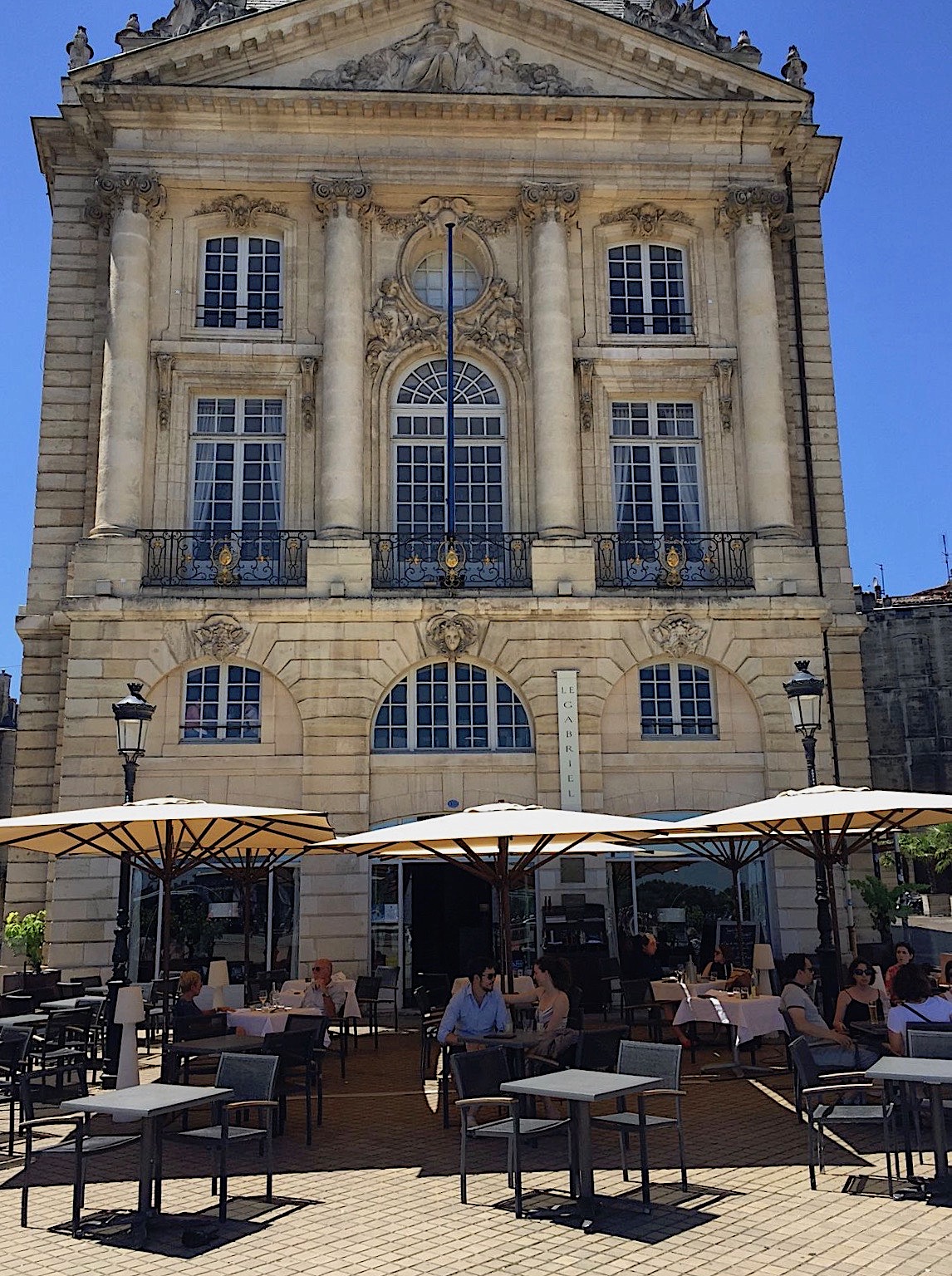 LE
BISTROT LE GABRIEL
LE
BISTROT LE GABRIEL
10 Place de la Bourse
+33 5 56 30
00 80
Inside, this
restaurant has a gourmet dining room, but the
bustling bistro is outside, splendidly set right
on the Place de la Bourse across from the River
Garonne. Under the summer sun expansive
umbrellas cast much needed shade on the nicely
set tables, and the staff—who speak good
English—are quick 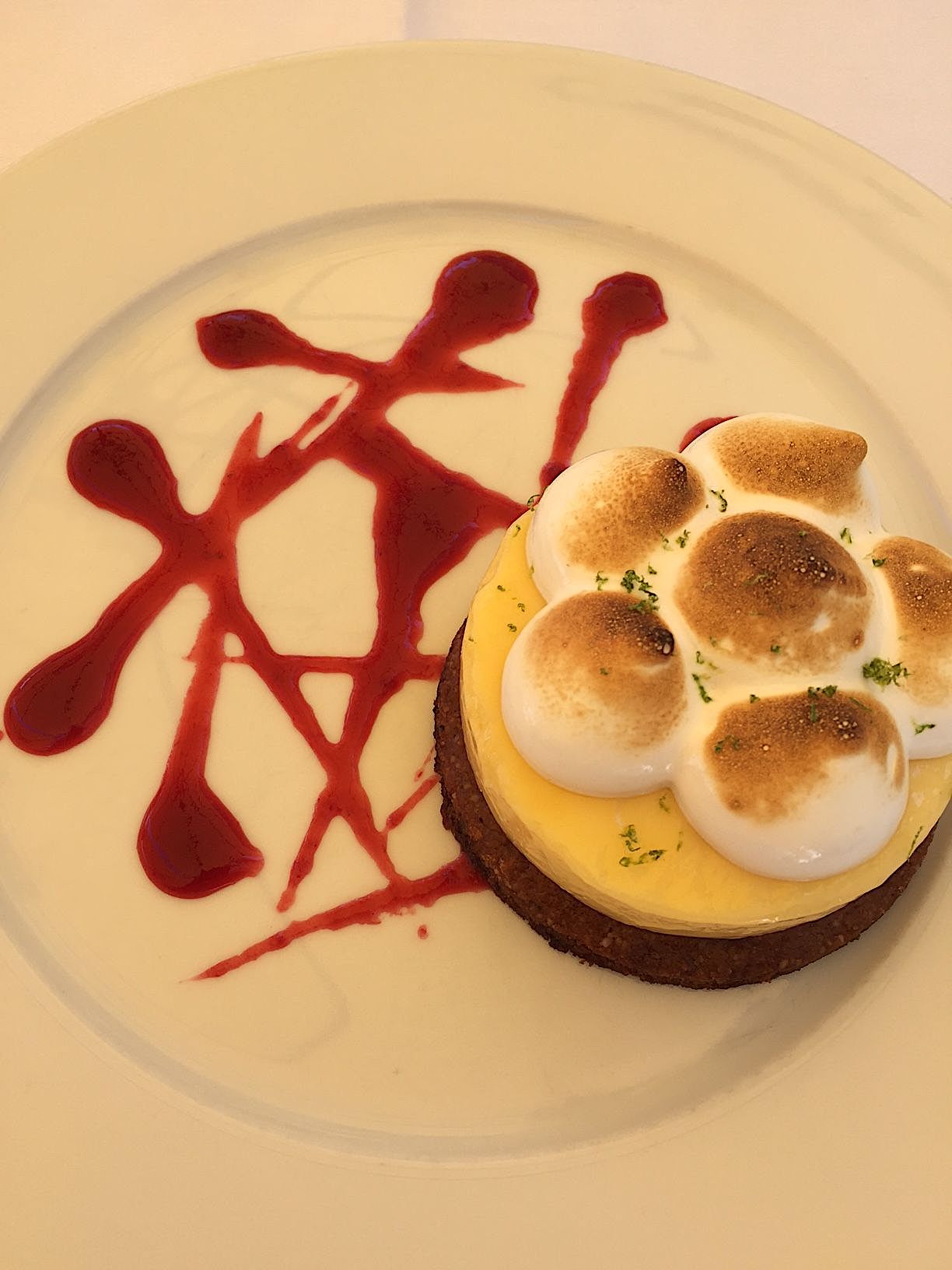 on their feet to meet all
requests, and that makes this one of the
cheeriest places to dine in the city.
on their feet to meet all
requests, and that makes this one of the
cheeriest places to dine in the city.
À la
carte prices run about €25 euros for main
courses, but the two lunch set menus, two
courses for €18, three for €31, are
extraordinary bargains. On Sundays they serve a
chicken dinner for two to six people at €21
each. A children’s menu is €13.
The wine list is excellent, especially the
number of wines by the glass. I began with a
glass of Dada Rouillac blanc, made from the
local Sauvignon Blanc and Semillon grapes, with
a starter of Caesar salad with freshly cooked
chicken and lush mango that was perfect for a
warm afternoon. This was followed with a glass
of rosé and a delicately cooked sea bass with a
purée of turnips and ivory-colored beurre blanc.
For
dessert there was a tangy-sweet tarte citron
with a meringue (right). Other sweets included le sable Bréton with pistachio and
raspberries and chocolate dome with vanilla and
cassis. Cheeses are also available.
Open daily for lunch and dinner.
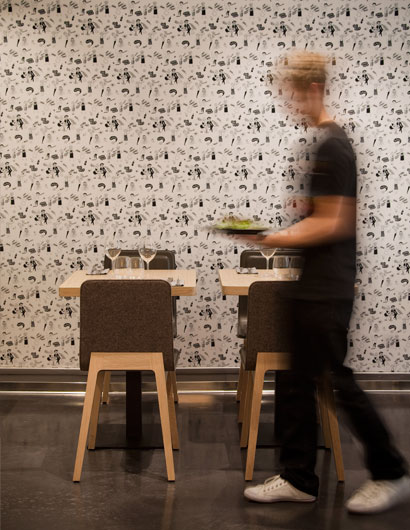 UNE
CUISINE EN VILLE
UNE
CUISINE EN VILLE
77 Rue du Palais Gallien
+33 5 56 44 70 93
Now six years old, with a
chef named Philippe Lagraula, Une Cuisine en Ville
is a 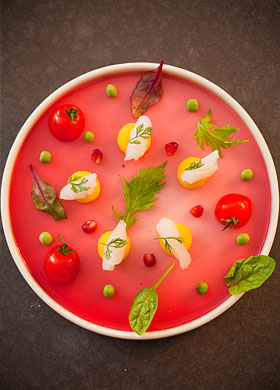 small, breezy two-room
bistro with a sunny patio, white tile wall and
wallpaper, and color accents of avocado green.
Lagraula serves personalized food of bright colors
and an insistence that the ingredients not be
masked by extraneous flavors. He
trained with Paul Bocuse, Michel Troisgros, Michel
Bras and Nicolas Le Bec, and he has traveled
outside of France to learn what other food
cultures can teach him, not least Latin America
and, especially, Peru.
“I love when the cooking has clarity
without artifice or too much technique, and one
that respects nature,” he says.
small, breezy two-room
bistro with a sunny patio, white tile wall and
wallpaper, and color accents of avocado green.
Lagraula serves personalized food of bright colors
and an insistence that the ingredients not be
masked by extraneous flavors. He
trained with Paul Bocuse, Michel Troisgros, Michel
Bras and Nicolas Le Bec, and he has traveled
outside of France to learn what other food
cultures can teach him, not least Latin America
and, especially, Peru.
“I love when the cooking has clarity
without artifice or too much technique, and one
that respects nature,” he says.
My lunch was to be a menu ballade,
four courses for a very reasonable €48 (a
tasting menu runs €65) that actually turned out,
with amuses
and extra items, to be more like six, beginning
with summer’s perfect asparagus scented with
tarragon and served with a little duck foie gras
and a vinaigrette of honey and passion fruit. Next
was a ceviche of cod whose bouillon of red onions
and vinegar bath gave it  wonderful
acidity along with crunchy pink peppercorns. A
Mediterranean fish called maigre in
French was remarkable for being nearly free of
bones, cooked simply with tiny clams and a foamy
vegetable sauce (left).
wonderful
acidity along with crunchy pink peppercorns. A
Mediterranean fish called maigre in
French was remarkable for being nearly free of
bones, cooked simply with tiny clams and a foamy
vegetable sauce (left).
Perfectly medium rare breast of
squab was done with a sauce caline
and glazed sliced carrots.
For dessert there were the
sweetest raspberries of the season with fromage blanc,
coconut and rose pralines, and a citrus tart with
meringue and a confiture of milk and passion
fruits.
Despite this being lunch, I
rose from the table impressed with what I ate but
not feeling in the least that I’d been stuffed. This is
a light cuisine, very modern while very much the
product of a grand tradition.
The wine card lists more than
100 bottlings.
If you need reminding why the
produce in France is so much better than in the
U.S., eat at Une Cuisine en Ville and be amazed.
CHEZ JEAN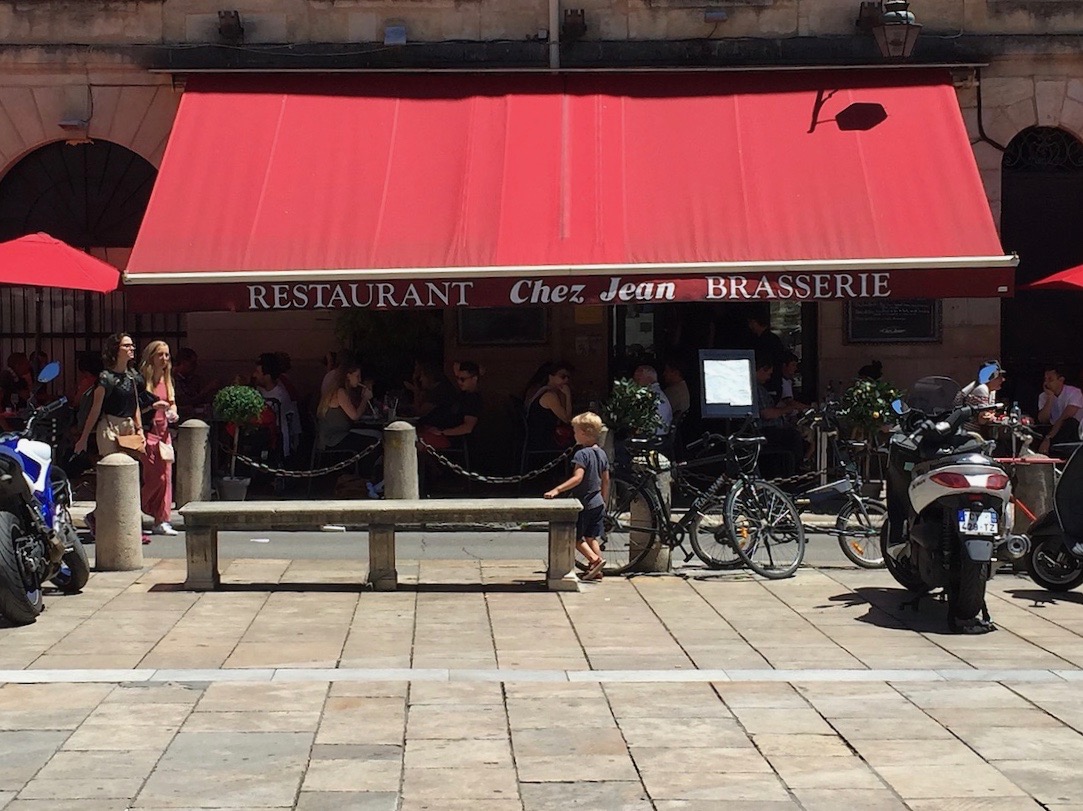
1 Place du Parliament
+33 5 56 444 443
For
a quick bite or pleasant dinner on a Sunday, Chez
Jean is as dependable as it is popular. It sits
right on the Place du Parlement, in view of the
fountain, with other restaurants arrayed around
the square, all packed with hungry, thirsty
people.
Inside is a good-looking dining
area with lipstick red banquettes and a stone
fireplace; outside tables are set close to one
another as much for conviviality as to maximize
space, so the waitresses weave in among them
holding plates of good, honest bourgeois food. For me
that meant a piperade
tarte with red pesto,
creamy ricotta and a light salad, and exactly the
kind of rough-textured pâté de
campagne with red onions I was craving that
day (left).
There is a savory parmesan cheesecake with figs as
a starter, as well as a foie gras panna cotta
with apple chutney and raspberry vinegar.
meant a piperade
tarte with red pesto,
creamy ricotta and a light salad, and exactly the
kind of rough-textured pâté de
campagne with red onions I was craving that
day (left).
There is a savory parmesan cheesecake with figs as
a starter, as well as a foie gras panna cotta
with apple chutney and raspberry vinegar.
A black pig from the Abotia
farm in the Basque country is cooked for ten hours
to make its meat velvety and suffused with fat,
and a square of merlu (hake)
comes with a confit of shallots and a risotto
laced with tarragon beurre blanc.
For dessert go for the apple tarte de “ma
Grand-Mere” or the raspberry mousse with a
mango coulis.
There are menus at €15 and
€29.50 as well as à la carte. The
wine list is not long but is composed almost
entirely of good Bordeaux at very reasonable
prices, with no bottles over €57.
Open for lunch and dinner daily.
LA
BRASSERIE BORDELAISE
50 Rue Saint Rémi
+33 5 57 87 11 91
La Brasserie Bordelaise has an
avid following of locals, tourists and the Net
media, so a reservation is always a necessity.
Once it fills up, which it does every night, it
gets loud but amiably boisterous. Its chief raison
d’étre is that this is the place in town you come
for meat, especially beef—a “taste of the
Southwest”—with cattle from Bazas, Simmental,
Limousin and Aquitaine. These are accompanied by
one of the city’s best wine lists—700 selections,
arrayed behind the bar as you walk in and on every
square inch of wall space, too.
 You might
wish to begin with oysters from the
Charente-Maritime, but it’s hard to resist the
generous platter of regional pork products and the
Spanish hams served with good country bread.
You might
wish to begin with oysters from the
Charente-Maritime, but it’s hard to resist the
generous platter of regional pork products and the
Spanish hams served with good country bread.
You can order beef from any of
those sources above, sold by the gram and kilo,
and there’s also good lamb shoulder with white
beans. Unless you specify otherwise, they cook the
slabs of meats very rare, and, since it is all
grass-fed, the beef can be chewy, without the fat
of grain-fed beef.
For dessert there is a slew of
housemade ice creams and hot, crisp fritters
filled with custard.
There is a market menu of 3
courses at lunch on weekdays for €22 that’s quite
a buy.
Open
daily
for lunch and dinner.
 LE
PETIT COMMERCE
LE
PETIT COMMERCE
22 Rue Parlement Saint-Pierre
+33 5 56 79 76 58
When Bordeaux heats up in
summer it gets very hot indeed, and most
restaurants have so far resisted installing
air-conditioning, which can make an otherwise
delightful, casual meal at Le Petit Commerce
something of an ordeal.
It seems always crowded
whenever it’s open and the food comes out of the
kitchen with dispatch. So don’t expect the most 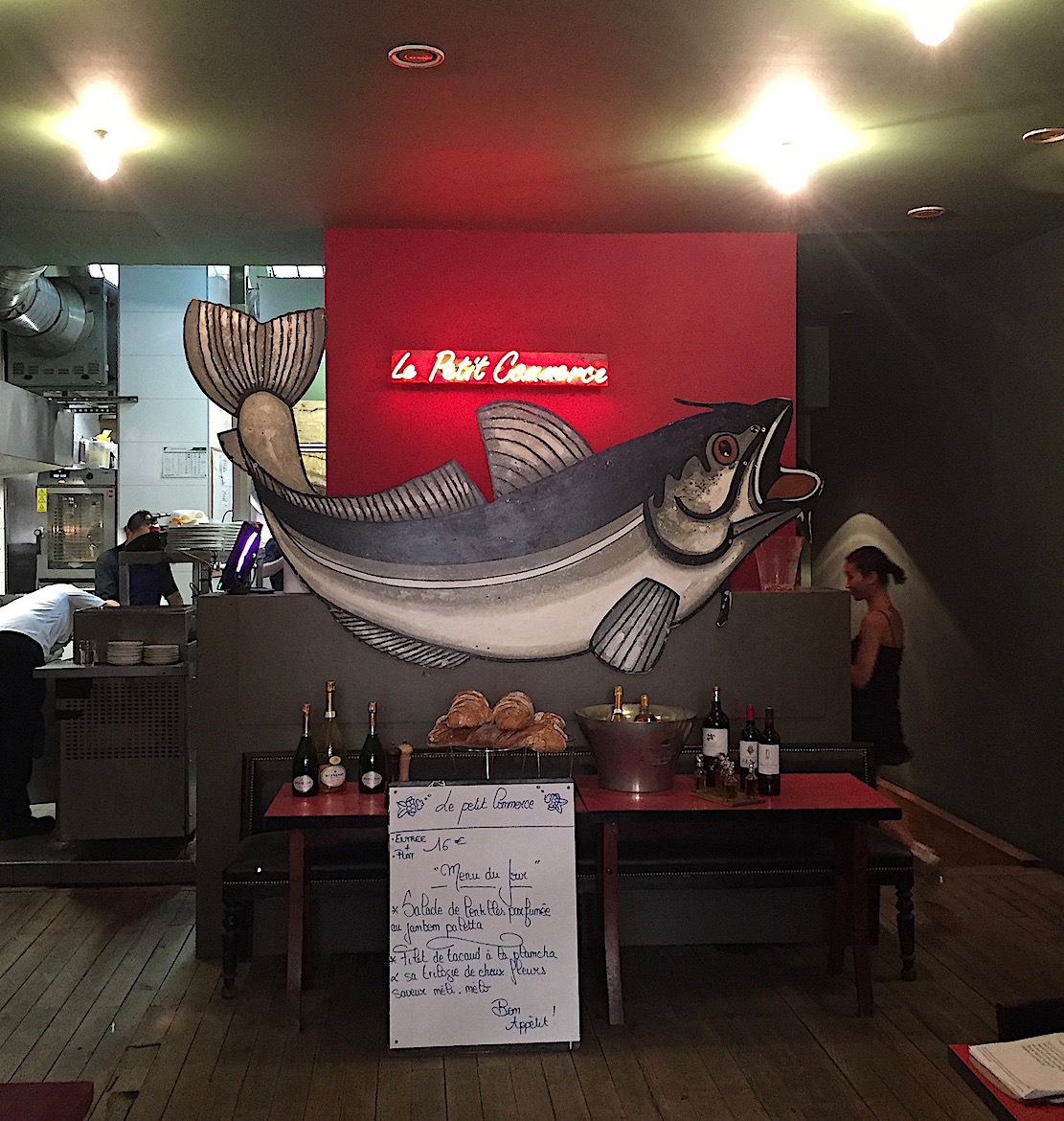 attentive
service.
attentive
service.
You’ll spot the place on a
narrow street by its gray façade and inside by a
large cut-out of a fish against a bright red wall
with neon lights.
There’s a daily blackboard menu, so it’s
best to go with the menu du jour
(two courses €16), which is simple, based on the
fish that came in that morning. The less done to
the food the better, so begin with a plateau de
fruits de mer, then a simply grilled fish
and don’t think about dessert. Main courses run
about €25.
Open daily for
lunch and dinner.
❖❖❖
By John Mariani
La PULPERIA
1626 Second Avenue (near 84th Street)
212-933-0757
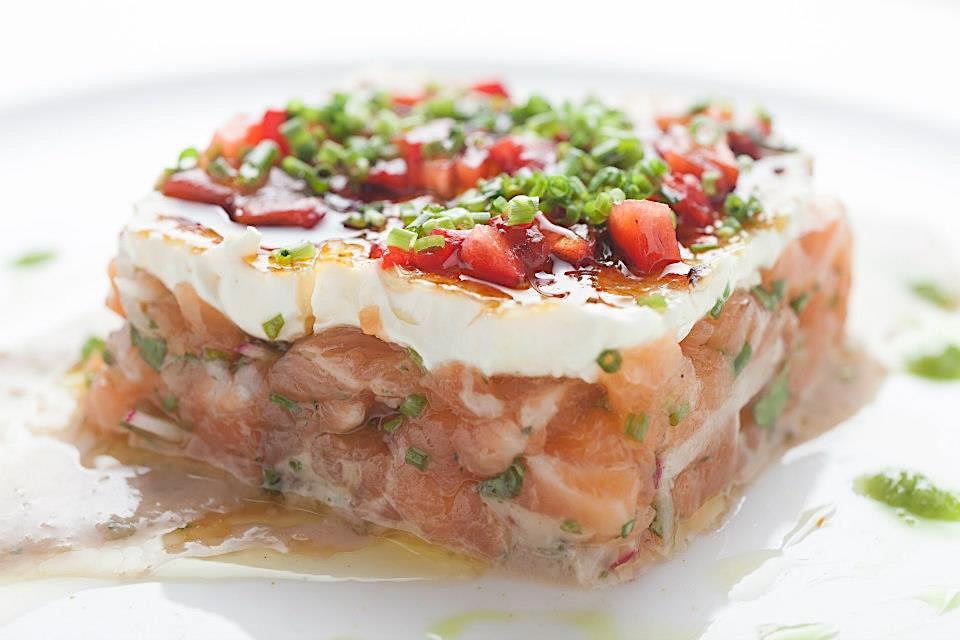
I hesitate
to recommend La Pulperia to anyone who fears
hearing loss, but the food is so delicious that I
would be remiss if I failed to alert readers to
the restaurant’s true appeal. One of three
connected Latin American restaurants by this name
in New York, La Pulperia serves enticing, exciting
dishes from appetizers through dessert, many not
easily found in Manhattan, though chances are
better in Queens and the Bronx.
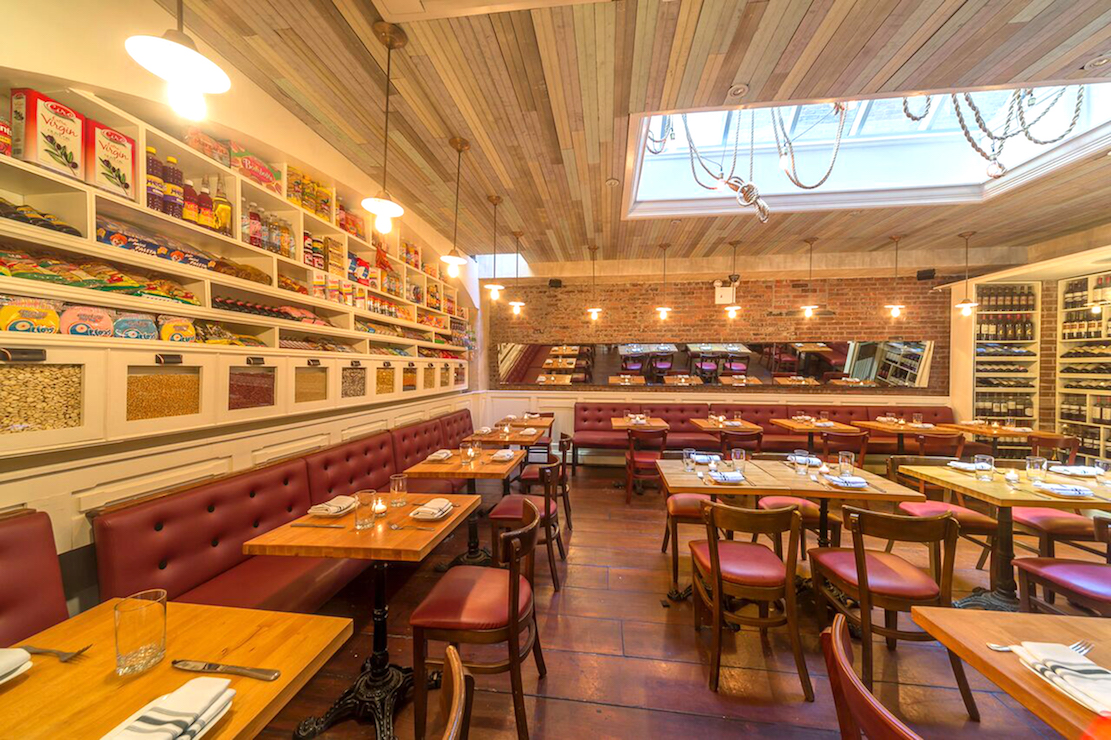 But that
noise problem is a big one. The second I walked into
the two-room restaurant on Second Avenue I was hit
with a punishing blast of noise, from both the boom
box music system and the crowd trying to be heard
above it. Even
after the co-owner (with Chef Carlos Barroz)
cordially offered to turn the music down, it still
registered on my iPhone app at 90 decibels—which is
the equivalent of having a revving motorcycle in the
middle of the dining room. If you’re going to really
enjoy the food and drink at La Pulperia, I recommend
going at lunch or around 5:30, before the cacophony
kicks in.
But that
noise problem is a big one. The second I walked into
the two-room restaurant on Second Avenue I was hit
with a punishing blast of noise, from both the boom
box music system and the crowd trying to be heard
above it. Even
after the co-owner (with Chef Carlos Barroz)
cordially offered to turn the music down, it still
registered on my iPhone app at 90 decibels—which is
the equivalent of having a revving motorcycle in the
middle of the dining room. If you’re going to really
enjoy the food and drink at La Pulperia, I recommend
going at lunch or around 5:30, before the cacophony
kicks in.
If you do, you’re in for some terrific food,
Pan-Latino but with a
nod toward Argentina.
It’s a colorful place, with a busy bar up
front, Mexican tile floors and recycled Brazilian
wood on the walls and ceilings. The only
soft surfaces to absorb the noise are the
banquettes.
Our party could not have
had a better, friendlier waiter that night, even if
he had to apologize for the twenty-minute wait for
cocktails; even then, my margarita arrived without a
salted rim, as requested. We also had to ask for
silverware like forks and tablespoons to scoop up
the food served in bowls and on platters.
The menu is of good size, with categories of
starters, raw items, soups and salads, empanadas,
sandwiches, seafood, meats and signature dishes,
along with a selection of oysters each night. 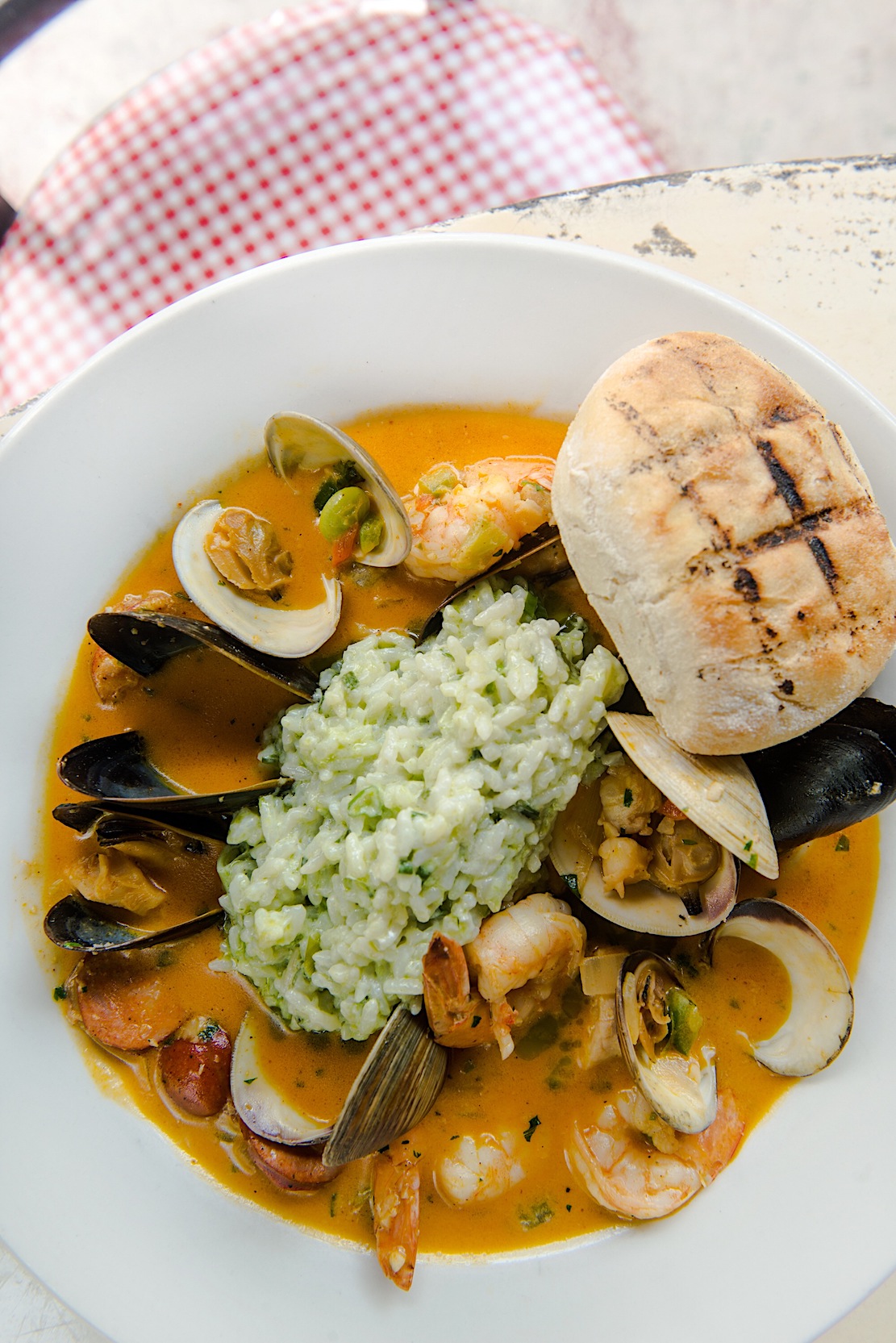 From
the raw bar, it’s best to order the crudo tasting
($30), which includes a cool, tangy escabeche
of octopus, chorizo, scallions capers, cilantro,
grape tomatoes and chipotle hummus—very unusual
indeed (right).
Even more so was the salmon brûlée that begins with
a delicate salmon tartare mounted with fromage blanc,
strawberry and ginger cache de Tigre
for snap and microgreens for texture—one of the best
dishes I’ve had this year.
From
the raw bar, it’s best to order the crudo tasting
($30), which includes a cool, tangy escabeche
of octopus, chorizo, scallions capers, cilantro,
grape tomatoes and chipotle hummus—very unusual
indeed (right).
Even more so was the salmon brûlée that begins with
a delicate salmon tartare mounted with fromage blanc,
strawberry and ginger cache de Tigre
for snap and microgreens for texture—one of the best
dishes I’ve had this year.
You can play it safe with guacamole ($12) or
queso fundito
($12) as a starter, but far more delectable are the crisp
lobster taquitos
with grilled pineapple, avocado and spiced
mayonnaise ($20), a little pricey but made with
abundant lobster.
A special the other night was an empanada stuffed
with
shredded crabmeat and nicely seasoned so as to
enhance the delicate seafood.
There is a section of grilled proteins like
hanger steak ($29), Spanish octopus ($33) and
chicken breast ($24), be we went for the signature
dishes. It
was puzzling to find one of them not available that
night—Argentinean BBQ for two ($75), a platter of
short ribs, hater steak, chicken, pot loin, chorizo,
blood sausage, sweetbreads, fries and salad. Instead
we had a marinated ribeye of excellent flavor—better
than at many steakhouses around town.
Way
more exciting were pacu fish
ribs (below),
which may well be unique to La Pulperia: grilled
Brazilian ribs from the pacu fish
(the chef gets them special from a Boston purveyor)
 that are
related to piranha but a lot more benign in the
water. They came with a sweet orange chipotle BBQ
sauce and nutty coconut rice ($25). If not as
unusual but every bit as good was Moqueca Mixta
($33), a big bowl of steaming squid, shrimp,
mussels, white fish, scallops, chorizo, cod, green
coconut rice and dense oil (above). All these signature items
can easily serve two, even three people.
that are
related to piranha but a lot more benign in the
water. They came with a sweet orange chipotle BBQ
sauce and nutty coconut rice ($25). If not as
unusual but every bit as good was Moqueca Mixta
($33), a big bowl of steaming squid, shrimp,
mussels, white fish, scallops, chorizo, cod, green
coconut rice and dense oil (above). All these signature items
can easily serve two, even three people.
I don’t really expect Latin American desserts
to be much beyond intensely sweet, but La Pulperia’s
are considerably more than that, and not all that
sweet. Not
even the tres
leches cake, creamy and very moist, or the
banana crêpe.
I was a little surprised there were no
Brazilian coffees available, just the usual espresso
and cappuccino everyone else serves. They might want
to re-think that.
There is a long cocktail list and
the wine list is adequate, with some Latin American
bottlings at reasonable prices. The Argentinean beer
Quilmes is an excellent alternative.
So.
I really, really loved La Pulperia’s food, and, if I
lived nearby, I’d be there often, and order
take-out, too.
But the likelihood of my visiting after 6
p.m. is at this point zero. Since no one—not even
the young Millennial crowd that packs the place—goes
for the
music and certainly not at that
decibel level, management should push it to the
background so that you might actually hear something
besides the bass guitar playing at full throttle. That
said, on Monday evenings there is live Brazilian
music that people really do come to hear.
Open for lunch Mon.-Fri., brunch Sat.
& Sun. Dinner nightly.
FOR THE FOURTH
By John Mariani
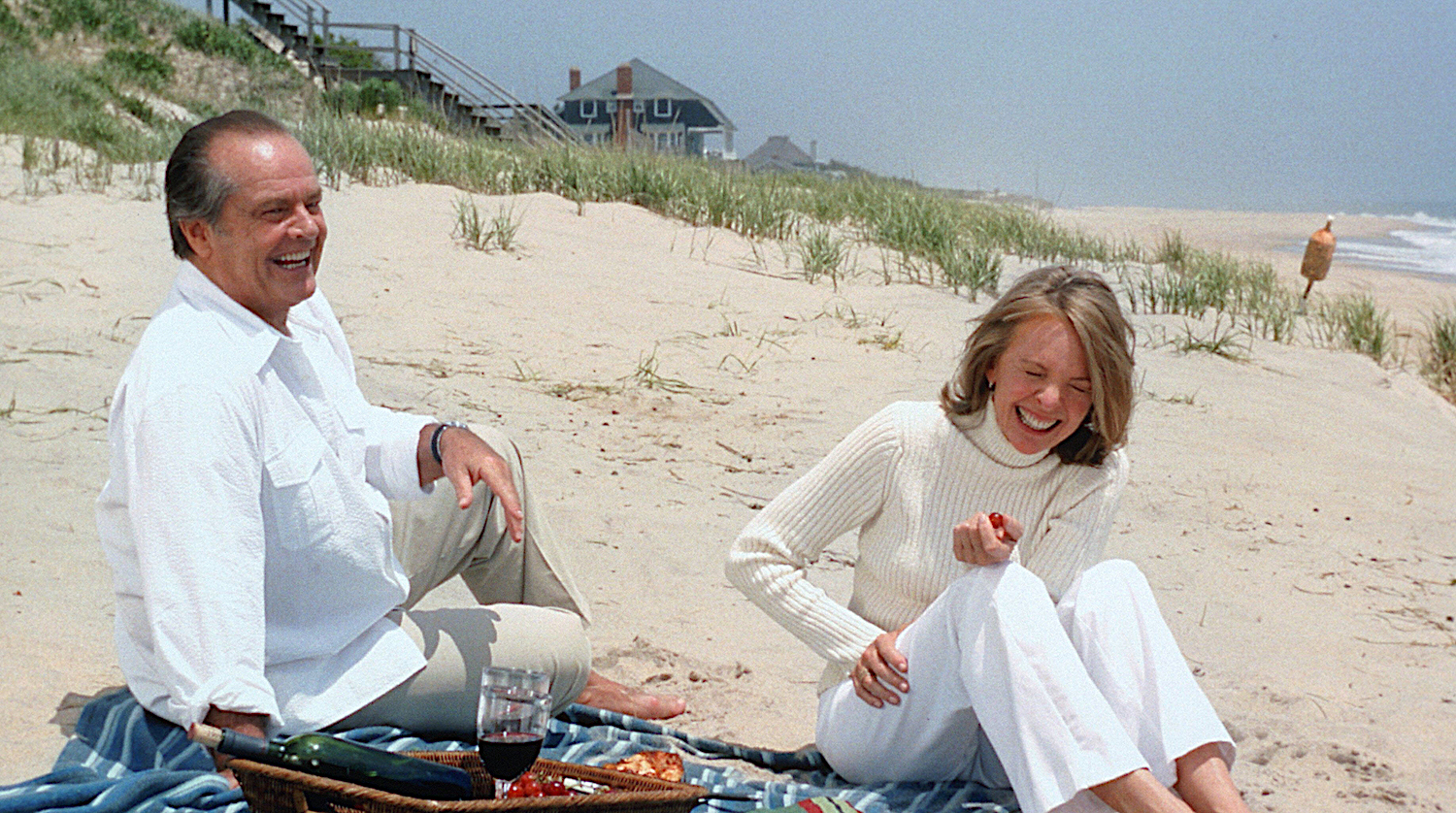
If at all possible next weekend, Americans will be outdoors celebrating Independence Day with family and friends, along with burgers, franks, steaks, chops, shrimp, crabs and a whole mess of side dishes, a lot of it cooked on the grill. So here are wines I’m thinking of for a backyard party where a lot of people can drink well without my spending a fortune on each bottle.
CASTELLO DEL TREBBIO CHIANTI SUPERIORE 2014 ($15)—This well priced I.G.T. tastes like Chianti from forty years ago, a blend of 85% Sangiovese, 15% Canaiolo and Ciliegiola, but without the oxidation that so often quickly occurred in the wine. Made from grapes in the Colli Fiorentini and Rufina regions, the wine shows a good deal of fruit forward and the tannins are modest, making this as apt for a pizza baked or cooked on the grill as just about anything you might be serving on July 4th.
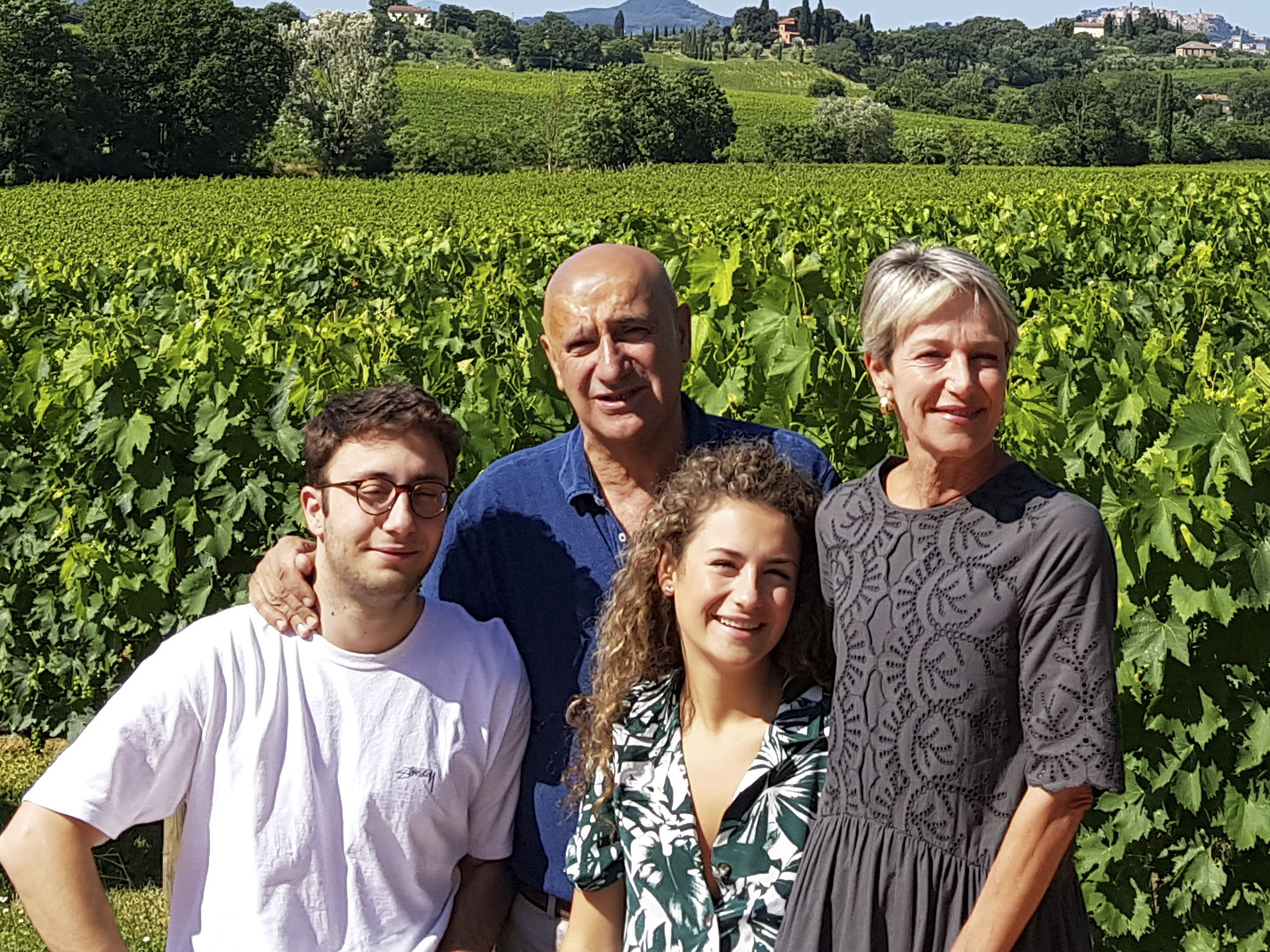
POLIZIANO VINO NOBILE DI MONTEPULCIANO 2014 ($30)—If you’re thinking of doing an American version of bistecca fiorentina this weekend, you won’t find a better match than this reasonably priced Vino Nobile, made from 85% Prugnolo Gentile and 15% Colorino, Canaiolo and Merlot, spending 16 months in barriques. Made by the Carletti family (left), the wine has a wonderful perfume in the glass and a nice soft finish, and it will take to the steak’s char like a velvet glove.
DOMAINE DE BILA-HAUT L’ESQUERDA 2016 ($28)—This red from a village in the Côte du Roussillon is precisely the kind to give wine lovers a new appreciation for regional French wines at good prices, which had been missing from the market for a long while. Now owned by Michel Chapoutier, the House of Bila was once a refuge for the Knights Templar (their cross is on the label). The root stocks are 40+ years old, so the character of the terroir comes through from the blend of Syrah, Grenache and Carignan typical of the region. It’s big-bodied but not overpowering, so with grilled chicken or ribs, it’ll work splendidly.
CARTAGHO MANDAROSSA NERO
D’AVOLA 2014 ($25)—Nero d’Avola is the
predominant grape of Sicily, and this 100%
varietal culls its grapes from the sandy soil
right on the Southern Sicilian coast. Without
being “plummy,” there is a hint of plum’s
sweetness, and at 14% it is a very good option
for cheese like Pecorino and Parmigiano. With
a plate of pasta I enjoyed every sip—make that
glass—of this wine,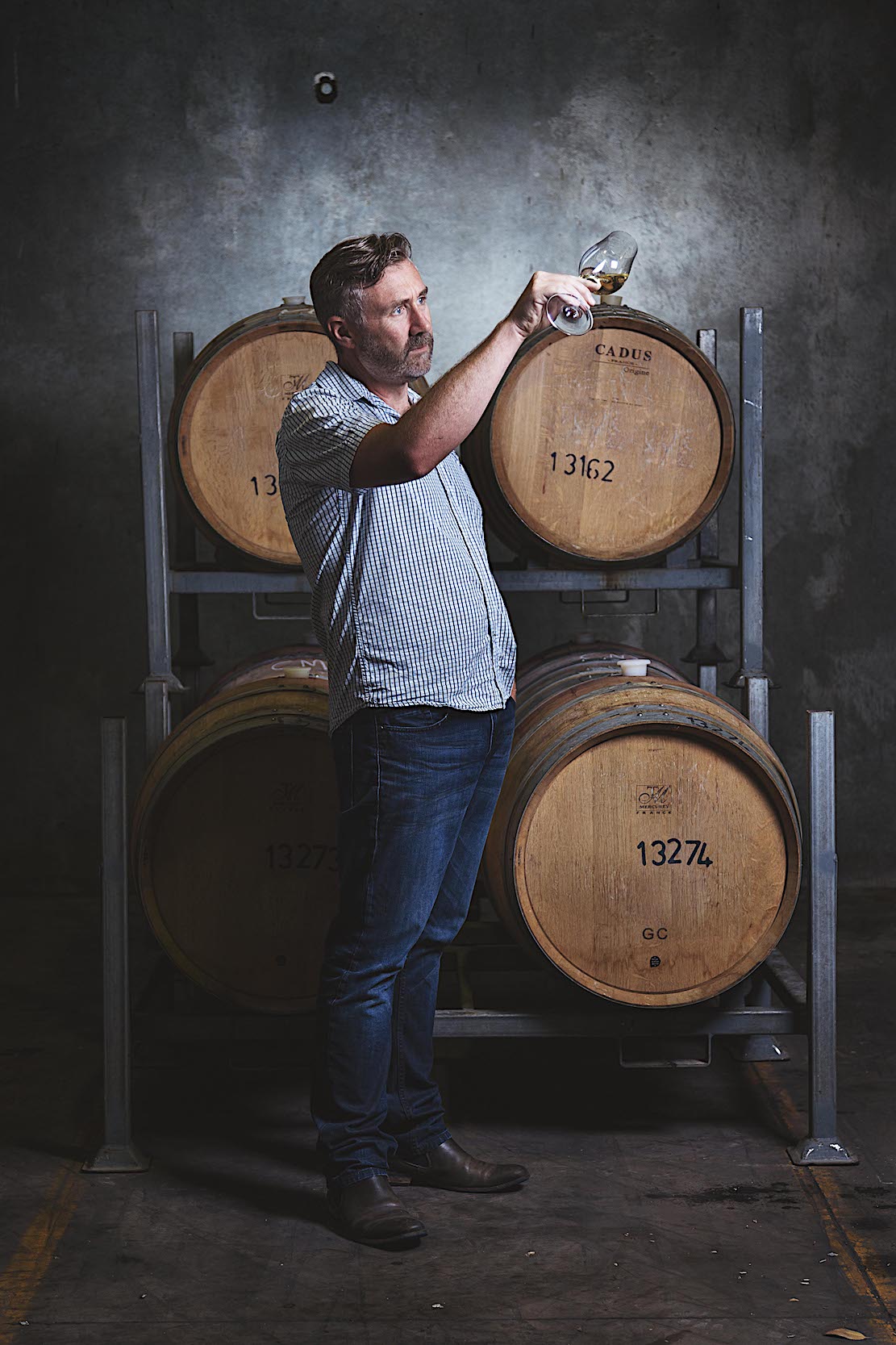 one of the better
Sicilian offerings from this vintage.
one of the better
Sicilian offerings from this vintage.
NOBILO ICON SAUVIGNON BLANC 2017 ($22)—With more layers of flavor than most New Zealand Sauvignon Blancs, Nobilo Icon winemaker Dave Edmonds (right) sources from three different vineyards in the Marlborough growing region. The Awatere vineyards provide the flinty character the grape needs; the Wairau vineyards give body, and the Rapaura gives the fruitiness without too much sweetness. It’s very well balanced and will be terrific as an aperitif or with lobster.
 FETZER
ANNIVERSARY RESERVE CABERNET SAUVIGNON 2016 ($9)—Mendocino’s Fetzer makes a
great deal of wine, and a lot of its basic
bottlings make it onto restaurant tables of
every stripe.
Barney Fetzer doesn’t always get the
credit he deserves for the company’s finer
wines, which certainly includes this
well-balanced limited edition Cab with just
13.5% alcohol, with a little Petit Verdot,
Merlot and Syrah adding complexity to the
richness of the fruit. For nine bucks this is
a great party wine for people who can
recognize it for its quality.
FETZER
ANNIVERSARY RESERVE CABERNET SAUVIGNON 2016 ($9)—Mendocino’s Fetzer makes a
great deal of wine, and a lot of its basic
bottlings make it onto restaurant tables of
every stripe.
Barney Fetzer doesn’t always get the
credit he deserves for the company’s finer
wines, which certainly includes this
well-balanced limited edition Cab with just
13.5% alcohol, with a little Petit Verdot,
Merlot and Syrah adding complexity to the
richness of the fruit. For nine bucks this is
a great party wine for people who can
recognize it for its quality.
LA CREMA SONOMA COAST PINOT NOIR 2016 ($25)—This family winery, begun in 1979, used the name La Crema to denote their wines would be the cream of the crop, and consistency has always been a hallmark of their satiny flagship cool climate Pinot Noirs, which will go as well with salmon as with roast pork. The fruit is sourced from several vineyards with various soil types, so you get minerality with the soft fruitiness.
❖❖❖
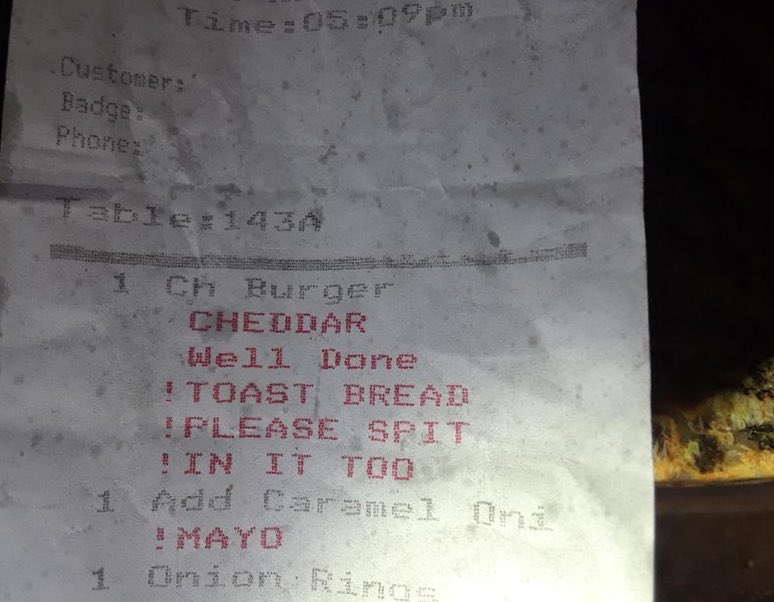
DAMN SPELLCHECK! SHE MEANT "SPAM"!
At the Bohemian Hall & Beer Garden in Long Island, NY, Curtis Mays asked for his receipt to find the instructions for his burger (well-done, toasted bread!) included his waitress’s request for a special ingredient. Spit.
OH, PUH-LEEZE!
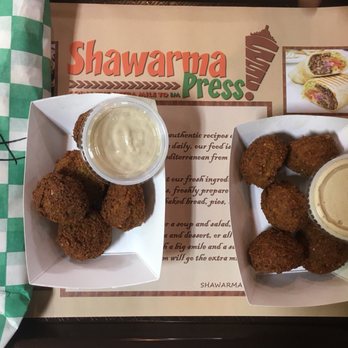
"Fusion has become a dirty word in the food
world. High-end chefs line up on the field of battle,
ready to trade words over whether fusion is the driver
of innovation and cross-cultural exchange or a craven
attempt by white Americans to profit off the cuisines of
immigrants."
--Brian Reinhart, "There's Serious
Craft Behind Eclectic Sandwiches at Irving's Shawarma
Press,"Dallas Observer
(5/30/18)
❖❖❖
Wine
Column Sponsored by Banfi Vintners
SANGIOVESE
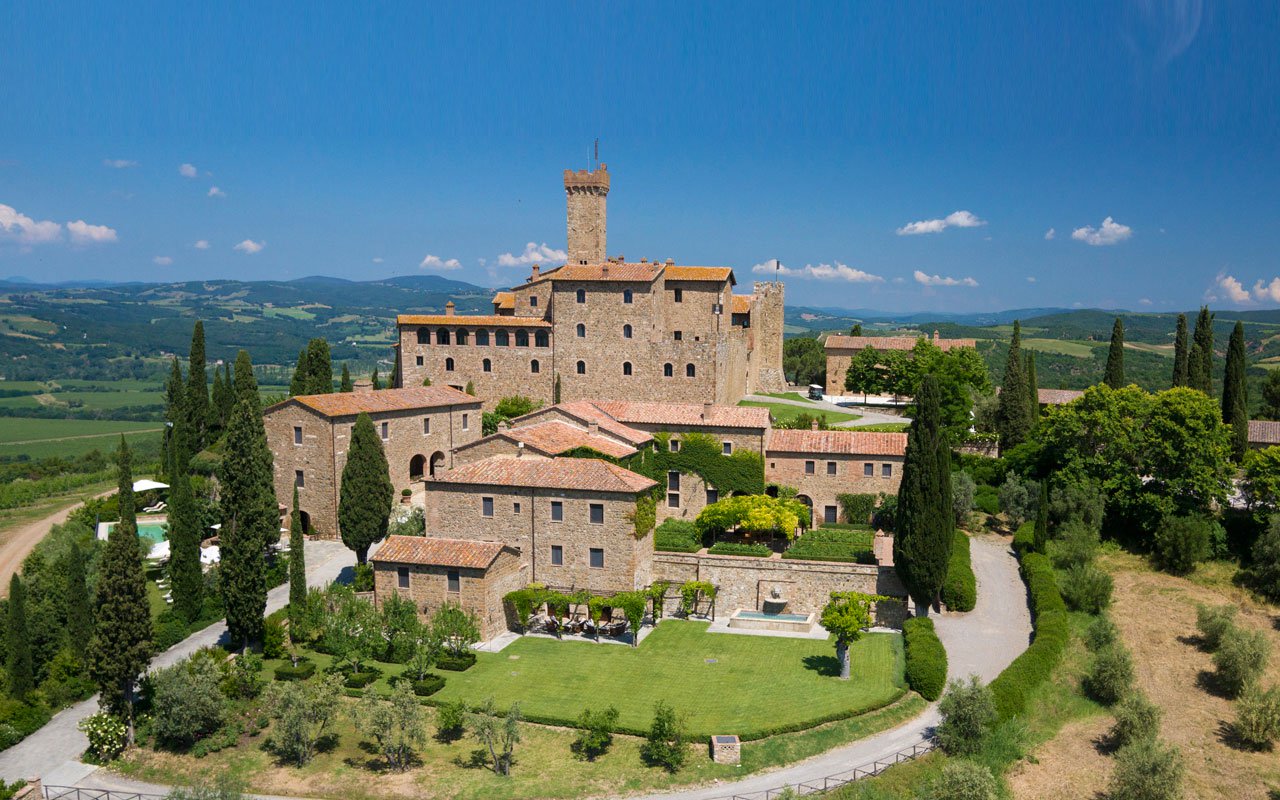 Wine is a joy year-round but
in cooler weather one
grape varietal has really taken center stage in
my daily activities – that most Italian of
grapes, Sangiovese, and its ultimate expression
– Brunello di Montalcino.
Wine is a joy year-round but
in cooler weather one
grape varietal has really taken center stage in
my daily activities – that most Italian of
grapes, Sangiovese, and its ultimate expression
– Brunello di Montalcino.
From mid-September through mid-October,
the Sangiovese grown for our various styles of red
wines are be harvested, culminating with the top
selection for Brunello di Montalcino.
Second, cooler weather here means
it is time to start enjoying more red wines and
especially Sangiovese based wines. That
includes Banfi’s cru of Brunello, Poggio alle Mura,
literally the cream of the crop of our Sangiovese
vineyards. Alongside our Poggio alle Mura Brunello di
Montalcino, this year we introduced two more wines
from the cru Poggio alle Mura – a Rosso di Montalcino
and a Riserva of Brunello. Rosso is sort of like the
younger brother of Brunello, also made from 100%
Sangiovese grapes but usually a selection from younger
vines and the wine is aged only two years compared to
the four required for Brunello. The
Riserva, on the other hand, is an even more selective
harvest of Sangiovese, and ages for an additional year
before release.
What is so special about this cru
Poggio alle Mura?
Well, it is the result our over 30 years of
ongoing research at my family’s vineyard estate,
Castello Banfi.
When we first began planting our vines there in
the late 1970s studies from the University of Bordeaux
indicated which strains of many varietals we should
plant, based on the soil type and microclimate of each
vineyard. But
when it came to the region’s native Sangiovese, there
was only local lore, no scientific research. So we took
it upon ourselves to figure out this vine, and set off
on three decades of incredibly detailed research.
We started
with 600 apparent variations on Sangiovese, because it
is so susceptible to variations in weather and soil,
and narrowed that down to 160 truly genetically
different clones.
We planted a vineyard with two rows of each
type, made wine from each of them, and charted the
differences – remember, you only get one chance a year
to make wine, so this took time.
It took about ten years to get some
concrete results, though we continue to experiment
today and always will – you never stop learning in
science and nature!
Once we determined which were the best,
complementary clones that could be planted together to
make the best Brunello, we chose to plant them in what
we determined to be the optimal vineyard sites. Coincidentally,
the best soils and climate conditions are in the
slopes surrounding the medieval fortress today known
as Castello Banfi, known since Etruscan times as
Poggio alle Mura – the walled hilltop. Hence the
name of our most special “cru” of Brunello,
representing a synthesis between tradition and
innovation.
Though the focus of this study was
our Brunello, all of our Sangiovese-based wines,
including the super Tuscans SummuS, Cum Laude, and
Centine, benefitted from this work. And that’s
the third reason for celebrating Sangiovese this
month, for the range of wonderful reds that usher us
into autumn! One
wine in particular was inspired by our research – the
BelnerO, a Sangiovese dominant blend with what I like
to call a kiss of Cabernet and a whisper of Merlot. We grow the
grapes a little differently for BelnerO than for
Brunello, make the wine with less oak aging and
released it earlier from the winery, providing a
counterpoint to Brunello and a lovely terroir-driven
wine in its own right.
If you
know Italians, you know that by nature we are
multi-faceted, varying in mood, and always passionate. As a
nation, we span from the hot sunny beaches of Sicily
near the African coast to the rugged mountains and
Alpine ski slopes of Trentino-Alto Adige in the north. Sangiovese
is grown in almost all of Italy’s regions and reflects
the unique nature of each; it is most famous
(rightfully so) in Tuscany, yet even there it reflects
the nuances of each hilltop, valley and subzone. It has
something a little different to say in Brunello than
Chianti, Morellino than Vino Nobile di Montepulciano,
Rosso di Montalcino than Super Tuscan blends.
Here is a smattering of
Sangiovese-based wines that you may wish to get to
know better, reflecting a spectrum that appeals to
every occasion, every taste, and every budget. We can
assure you that the conversation will never become
boring. 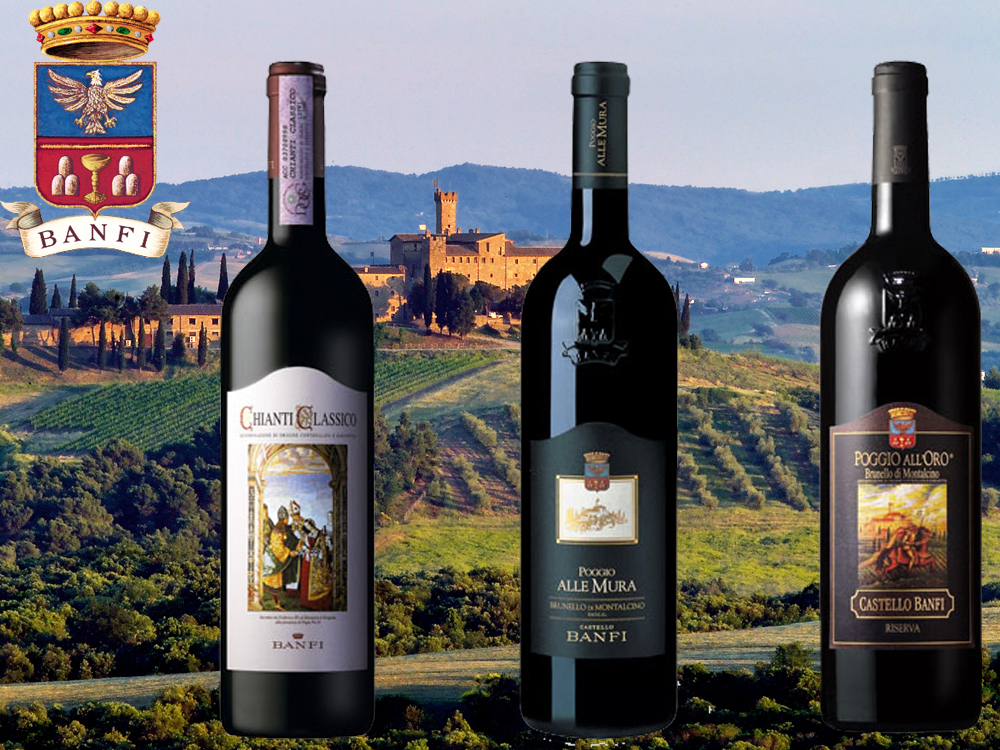
Recommendations for Celebrating
Sangiovese
BelnerO Proprietor’s Reserve Sangiovese
– A refined
cuvée of noble red grapes perfected by our pioneering
clonal research. This dark beauty, BelnerO, is
produced at our innovative winery, chosen 11
consecutive years as Italy’s Premier Vineyard Estate.
Fermented in our patented temperature controlled
French oak and aged approximately 2 additional years.
Unfiltered, and Nitrogen bottled to minimize sulfites.
Castello Banfi Brunello di Montalcino –
Rich, round, velvety and intensely
aromatic, with flavor hints of licorice, cherry, and
spices. Brunello di Montalcino possesses an intense
ruby-red color, and a depth, complexity and opulence
that is softened by an elegant, lingering aftertaste.
Unfiltered after 1998 vintage.
Castello Banfi Rosso di Montalcino – Brunello's "younger brother," produced
from select Sangiovese grapes and aged in barrique for
10 to 12 months. Deep ruby-red, elegant, vibrant,
well-balanced and stylish with a dry velvety
finish.
Poggio all’Oro Brunello di Montalcino
Riserva – A single vineyard selection of our most
historically outstanding Sangiovese, aged five years
before release, the additional year more than that
required of Brunello including 6 months in barrel and
6 months more in bottle to grant its “Riserva”
designation. Incredible
elegance and harmony. Intense with lots of fruit and
subtle wood influence. Round, complete, well balanced
with hints of chocolate and berries. Unfiltered after
1998.
Poggio alle Mura – The first tangible result of years of
intensive clonal research on Montalcino’s native
Sangiovese grape.
Estate bottled from the splendidly sun drenched
vineyards surrounding the medieval Castello from which
it takes its name.
The Brunello
di Montalcino is seductive, silky and smoky. Deep ruby
in color with an expressive bouquet of violets, fruits
and berries as well as cigar box, cedar and exotic
spices. The Rosso
di Montalcino is also intense ruby red. The bouquet
is fresh and fruity with typical varietal notes of
cherry and blackberry, enriched by more complex hints
of licorice, tobacco and hazelnut. It is full
bodied, yet with a soft structure, and a surprisingly
long finish. The Poggio alle Mura Brunello di Montalcino
Riserva is deep ruby red with garnet
reflections and a rich, ample bouquet that hints of
prune jam, coffee, cacao and a light balsamic note. It is full
and powerful, with ripe and gentle tannins that make
it velvety and harmonious; this wine is supported by a
pleasing minerality that to me speaks soundly of that
special hillside in southern Montalcino.
SummuS – A wine of towering elegance, SummuS is an
extraordinary blend of Sangiovese which contributes
body; Cabernet Sauvignon for fruit and structure; and
Syrah for elegance, character and a fruity bouquet. An elegant,
complex and harmonious red wine.
Cum Laude – A complex and elegant red which graduated
“With Honors,” characterized by aromas of juicy
berries and fresh spices.
Centine – A Cuvee that is more than half
Sangiovese, the balanced consisting of equal parts of
Cabernet Sauvignon and Merlot. Vinified in
a firm, round style that easily accompanies a wide
range of dishes, this is a smooth and fragrantly
satisfying wine with international character, and a
perennial favorite at my own dinner table.
Banfi Chianti Superiore – The “Superiore” designation signifies
stricter government regulations regarding production
and aging requirements, as compared to regular
Chianti. An
intense ruby red wine with fruit forward aromas and
floral notes. This
is a round wine with well-balanced acidity and fruit.
Banfi Chianti Classico – An enduring classic: alluring
bouquet of black fruit and violets; rich flavors of
cherry and leather; supple tannins and good acidity
for dining.
Banfi Chianti Classico Riserva – Produced from select grapes grown in the
"Classico" region of Chianti, this dry, fruity and
well-balanced red has a full bouquet reminiscent of
violets.
Fonte alla Selva Chianti Classico – This is our newest entry into the Chianti
arena, coming from a 99 acre estate in Castellina, the
heart of the Chianti Classico region. The wine is
a captivating mauve red that smells of cherry, plum
and blackberry with hints of spice. It is
round, full and balanced with very good
acidity.
Col di Sasso – Sangiovese and Cabernet Sauvignon. Luscious,
complex and soft with persistent notes of fruit and
great Italian style structure.
Any of John Mariani's books below may be ordered from amazon.com.
 The Hound in Heaven
(21st Century Lion Books) is a novella, and
for anyone who loves dogs, Christmas, romance,
inspiration, even the supernatural, I hope you'll find
this to be a treasured favorite. The story
concerns how, after a New England teacher, his wife and
their two daughters adopt a stray puppy found in their
barn in northern Maine, their lives seem full of promise.
But when tragedy strikes, their wonderful dog Lazarus and
the spirit of Christmas are the only things that may bring
his master back from the edge of despair.
The Hound in Heaven
(21st Century Lion Books) is a novella, and
for anyone who loves dogs, Christmas, romance,
inspiration, even the supernatural, I hope you'll find
this to be a treasured favorite. The story
concerns how, after a New England teacher, his wife and
their two daughters adopt a stray puppy found in their
barn in northern Maine, their lives seem full of promise.
But when tragedy strikes, their wonderful dog Lazarus and
the spirit of Christmas are the only things that may bring
his master back from the edge of despair. WATCH THE VIDEO!
“What a huge surprise turn this story took! I was completely stunned! I truly enjoyed this book and its message.” – Actress Ali MacGraw
“He had me at Page One. The amount of heart, human insight, soul searching, and deft literary strength that John Mariani pours into this airtight novella is vertigo-inducing. Perhaps ‘wow’ would be the best comment.” – James Dalessandro, author of Bohemian Heart and 1906.
“John Mariani’s Hound in Heaven starts with a well-painted portrayal of an American family, along with the requisite dog. A surprise event flips the action of the novel and captures us for a voyage leading to a hopeful and heart-warming message. A page turning, one sitting read, it’s the perfect antidote for the winter and promotion of holiday celebration.” – Ann Pearlman, author of The Christmas Cookie Club and A Gift for my Sister.
“John Mariani’s concise, achingly beautiful novella pulls a literary rabbit out of a hat – a mash-up of the cosmic and the intimate, the tragic and the heart-warming – a Christmas tale for all ages, and all faiths. Read it to your children, read it to yourself… but read it. Early and often. Highly recommended.” – Jay Bonansinga, New York Times bestselling author of Pinkerton’s War, The Sinking of The Eastland, and The Walking Dead: The Road To Woodbury.
“Amazing things happen when you open your heart to an animal. The Hound in Heaven delivers a powerful story of healing that is forged in the spiritual relationship between a man and his best friend. The book brings a message of hope that can enrich our images of family, love, and loss.” – Dr. Barbara Royal, author of The Royal Treatment.
 |
The Encyclopedia of American Food and Drink by John F. Mariani (Bloomsbury USA, $35) Modesty forbids me to praise my own new book, but let me proudly say that it is an extensive revision of the 4th edition that appeared more than a decade ago, before locavores, molecular cuisine, modernist cuisine, the Food Network and so much more, now included. Word origins have been completely updated, as have per capita consumption and production stats. Most important, for the first time since publication in the 1980s, the book includes more than 100 biographies of Americans who have changed the way we cook, eat and drink -- from Fannie Farmer and Julia Child to Robert Mondavi and Thomas Keller. "This book is amazing! It has entries for everything from `abalone' to `zwieback,' plus more than 500 recipes for classic American dishes and drinks."--Devra First, The Boston Globe. "Much needed in any kitchen library."--Bon Appetit. |
"Eating Italian will never be the same after reading John Mariani's entertaining and savory gastronomical history of the cuisine of Italy and how it won over appetites worldwide. . . . This book is such a tasteful narrative that it will literally make you hungry for Italian food and arouse your appetite for gastronomical history."--Don Oldenburg, USA Today. "Italian
restaurants--some good, some glitzy--far
outnumber their French rivals. Many of
these establishments are zestfully described
in How Italian Food Conquered the World, an
entertaining and fact-filled chronicle by
food-and-wine correspondent John F.
Mariani."--Aram Bakshian Jr., Wall Street
Journal.
"Equal parts
history, sociology, gastronomy, and just
plain fun, How Italian Food Conquered the
World tells the captivating and delicious
story of the (let's face it) everybody's
favorite cuisine with clarity, verve and
more than one surprise."--Colman Andrews,
editorial director of The Daily
Meal.com. "A fantastic and fascinating
read, covering everything from the influence
of Venice's spice trade to the impact of
Italian immigrants in America and the
evolution of alta cucina. This book will
serve as a terrific resource to anyone
interested in the real story of Italian
food."--Mary Ann Esposito, host of PBS-TV's
Ciao
Italia. "John Mariani has written the
definitive history of how Italians won their
way into our hearts, minds, and
stomachs. It's a story of pleasure over
pomp and taste over technique."--Danny Meyer,
owner of NYC restaurants Union Square
Cafe, The Modern, and Maialino.
|
 |
 |
 |
 |
 |
 |
 |
 |
 Everett Potter's Travel Report:
Everett Potter's Travel Report: 
 Eating Las Vegas
JOHN CURTAS has been covering the Las Vegas
food and restaurant scene since 1995. He is
the co-author of EATING LAS VEGAS – The 50
Essential Restaurants (as well as
the author of the Eating Las Vegas web site: www.eatinglasvegas.
He can also be seen every Friday morning as
the “resident foodie” for Wake Up With the
Wagners on KSNV TV (NBC) Channel 3 in
Las Vegas.
Eating Las Vegas
JOHN CURTAS has been covering the Las Vegas
food and restaurant scene since 1995. He is
the co-author of EATING LAS VEGAS – The 50
Essential Restaurants (as well as
the author of the Eating Las Vegas web site: www.eatinglasvegas.
He can also be seen every Friday morning as
the “resident foodie” for Wake Up With the
Wagners on KSNV TV (NBC) Channel 3 in
Las Vegas.
MARIANI'S VIRTUAL GOURMET
NEWSLETTER is published weekly. Publisher: John Mariani. Editor: Walter Bagley. Contributing Writers: Christopher Mariani,
Robert Mariani, Misha Mariani, John A. Curtas, Gerry Dawes, Geoff Kalish,
and Brian Freedman. Contributing
Photographer: Galina Dargery. Technical
Advisor: Gerry
McLoughlin.
If you wish to subscribe to this
newsletter, please click here: http://www.johnmariani.com/subscribe/index.html
© copyright John Mariani 2017

